How to visit the Amazon rainforest in Brazil: A complete guide
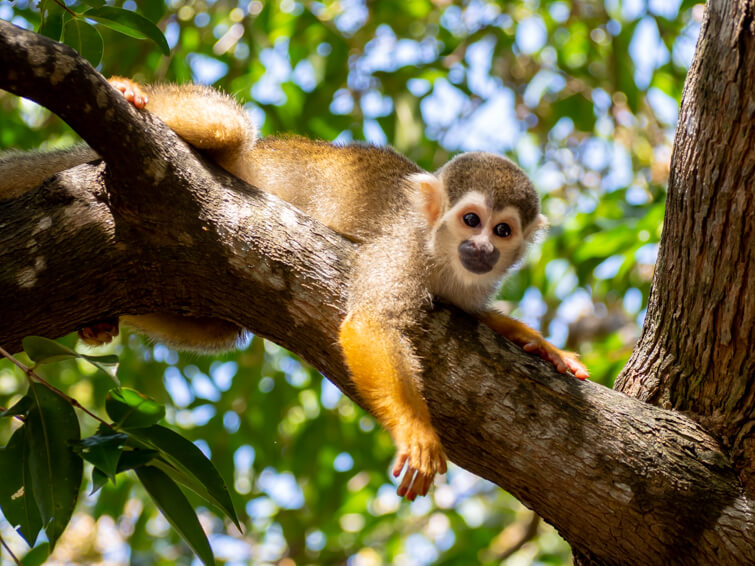
On my latest trip to Brazil, I had the opportunity to tick off a major bucket list item of mine – to visit the Amazon rainforest. It’s a destination that had fascinated me since I was a child, so it was a dream come true to finally see this mystical place with my own eyes.
Due to the immense size of the Amazon, planning a trip here can feel confusing and overwhelming. Therefore, I’ve put together this guide where I’m sharing my best travel tips on how to visit the Amazon rainforest in Brazil.
Covering an area of 6.7 million km2 (2.6 million sq mi), the Amazon spans 40% of South America and is by far the largest rainforest in the world. The Amazon basin is one of the most biodiverse places on the planet and is believed to be home to 10% of all known species.
Known as the Lungs of the Earth, the Amazon tops the wishlist of many travelers from around the globe and is an ideal destination for those looking to connect with nature.
Whether you want to explore the depths of Brazil’s jungles, lock eyes with wild animals, taste wonderful exotic fruits, relax on unspoiled beaches or cruise down the Amazon River – you will make memories that will last a lifetime! And this Amazon rainforest travel guide will show you exactly how to do that.
Without further ado, let’s dive into all the things you need to know for planning a trip to the Amazon rainforest in Brazil.
Disclosure: This article contains affiliate links from which I may make a commission at no additional cost to you if you make a purchase. I was invited to stay at Dolphin Lodge but as always, all opinions are my own.
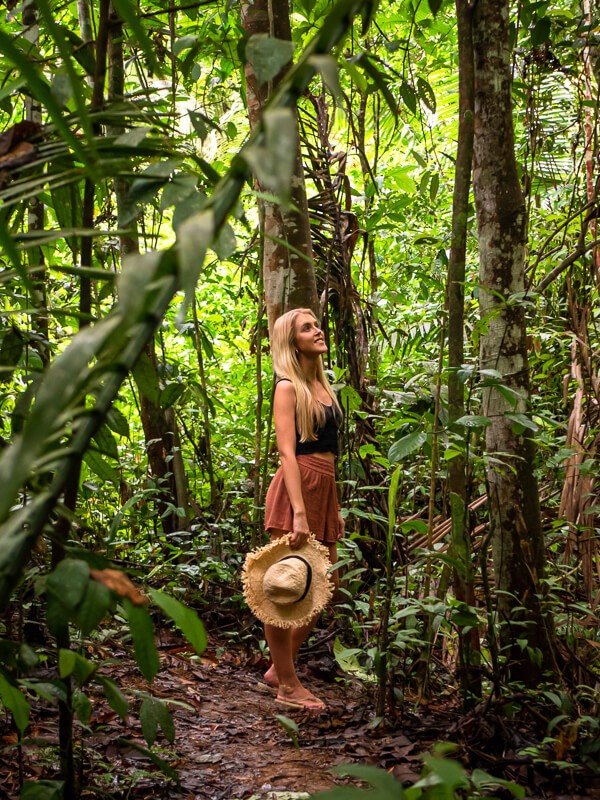
How to get to the Amazon rainforest in Brazil?
The best way to get to the Amazon rainforest in Brazil is to fly to Eduardo Gomes International Airport in the city of Manaus. Known as the gateway to the Brazilian Amazon, Manaus is the main tourist hub in the region and the capital of the Amazonas state.
You can take a direct flight from Sao Paulo to Amazon rainforest (Manaus), which takes about four hours. There are also direct flights to Manaus from other major cities in Brazil, such as Rio de Janeiro and Brasilia, as well as from Miami, Panama City and Bogota.
Alternatively, you could also fly to Santarem, which is a smaller town about 600km (370 mi) east of Manaus.
We started our Amazon trip by flying to Manaus and finished it by flying out of Santarem. To get from Manaus to Santarem, we took a ferry down the Amazon River. I’m explaining more about why we did this further below.
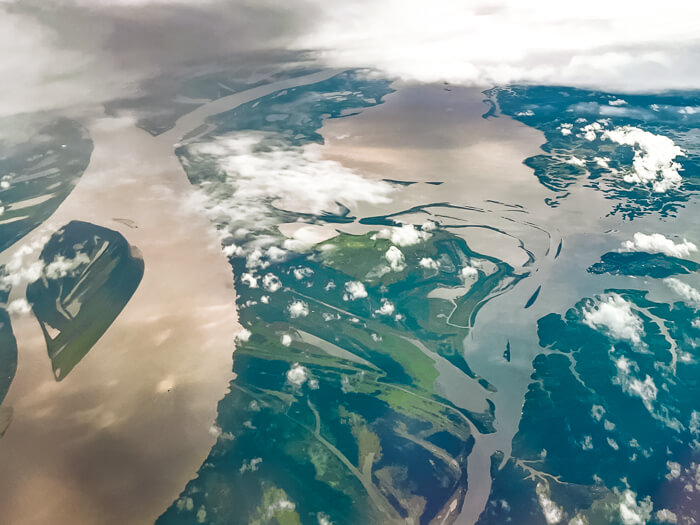
How many days do you need?
I would say three days is the minimum amount of time that you should set aside for visiting the Amazon rainforest in Brazil. In three days, you can do a handful of excursions, which will give you a glimpse of what this enchanting region has to offer. However, you’d only be skimming the surface.
I highly recommend spending a week or even 10 days exploring the Amazon rainforest if you can. This way, you’ll have enough time to visit several different areas of the Amazon region and enjoy a wider variety of experiences – from exploring jungles and rivers to relaxing on beaches and visiting waterfalls.

It’s also a good idea to have a few extra days as a buffer in your Amazon rainforest itinerary in case the weather turns out to be bad and prevents you from doing some of the activities you had planned (happened to us on a few occasions). In total, we spent 9 days in the Amazon but I wish we had a few more days.
If you’re interested in seeing more of Brazil (which I hope you are since there are countless amazing places to explore!), check out my post on 3 Brazil itinerary options to find inspiration for planning out the rest of your trip.
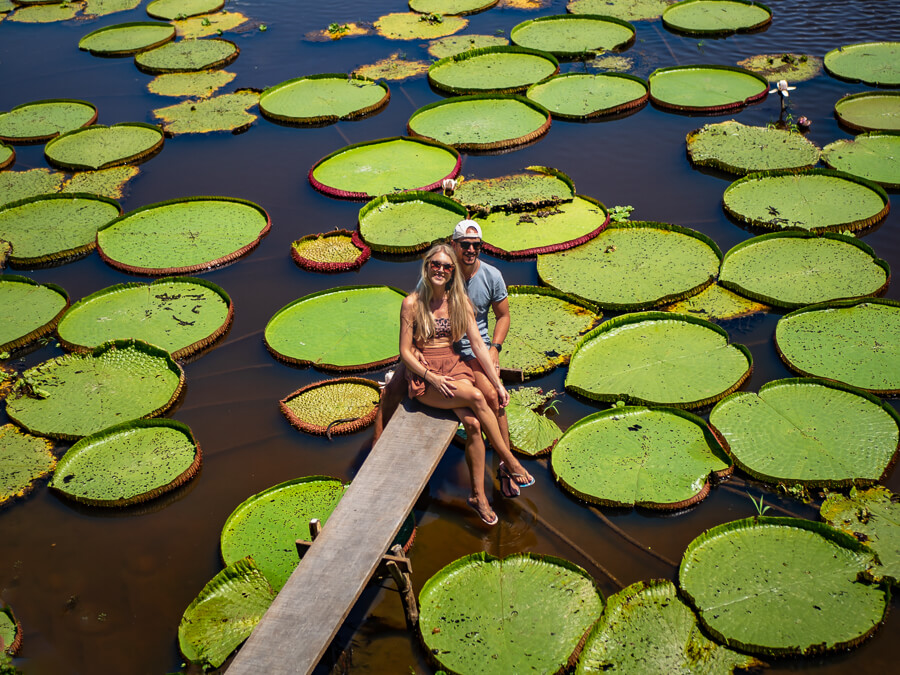
Best time to visit the Amazon rainforest in Brazil
There are two distinct seasons in the Amazon – the dry season and the rainy season. They are also known as the low water season and the flood season. Don’t let the word ‘dry’ fool you though. Remember that it’s still a tropical rainforest so you should expect to see some rain every day regardless of when you visit.
There’s no clear ‘best’ time to visit the Amazon rainforest in Brazil since there are pros and cons to both seasons. The rainy season typically runs from January to July and the dry season from August to December. The temperature remains hot throughout the year (around 27-30°C or 80-86°F).
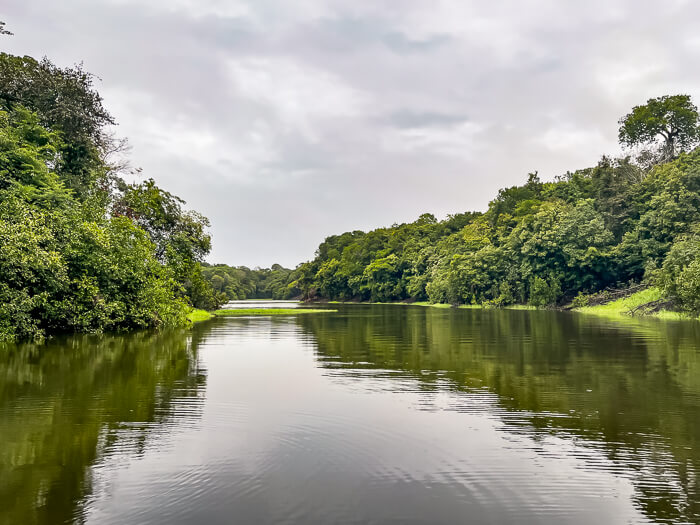
The advantages of visiting during the dry season are less rain, fewer mosquitoes, better access to the river beaches and better trekking options since the jungle won’t be flooded.
The main advantage of visiting during the rainy season is that you’ll have better opportunities for boat/canoe tours. Higher water levels make it possible to access smaller canals and get deeper into the flooded forests, which are locally known as igapó.
Be aware though that once the rainy season has kicked in and the water levels have risen (February-July), you won’t be able to enjoy the white sand beaches along the river banks, as they will be fully flooded.
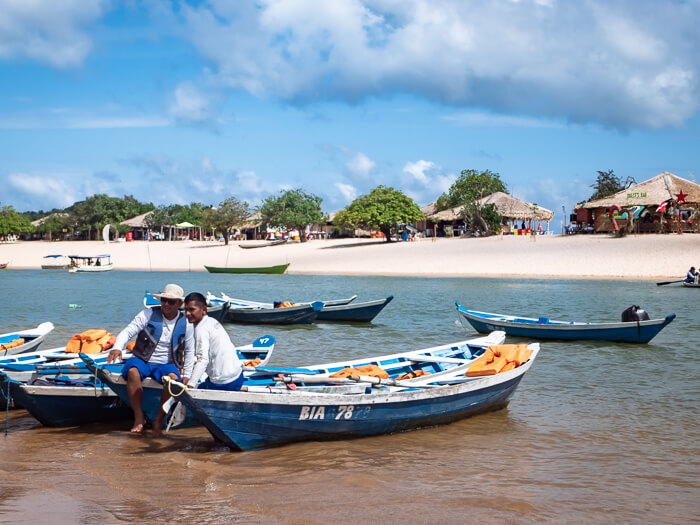
In some parts of the Amazon, the water level in the rivers rises by a whopping 12 meters (40 ft) by the peak of the rainy season. I find this absolutely mind-blowing!
We visited the Amazon from the end of December until the beginning of January, which is a transitional period from the dry to the rainy season. We experienced a lot of rain in the Manaus area but only a little rain in the Santarem-Alter do Chão area. This shows that the weather in the Amazon can be quite unpredictable.
How to visit the Amazon rainforest in Brazil?
One of the best ways to visit the Amazon rainforest in Brazil is to stay at a jungle lodge in the region around Manaus. The majority of the lodges are within a 2-3 hour drive or boat ride from Manaus and usually offer all-inclusive packages that include transfers from Manaus, all meals and several excursions on each day.
During the excursions, you’ll be accompanied by local guides who take you on jungle walks and boat tours and share their knowledge of the flora and fauna of the Amazon.
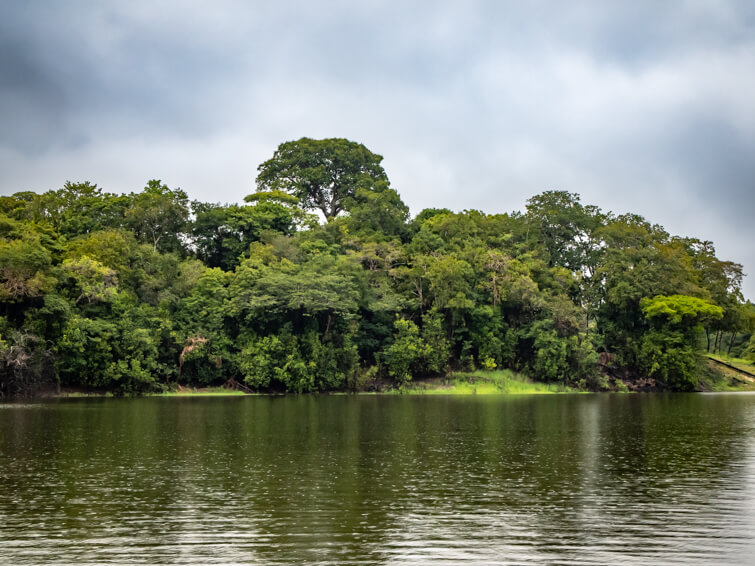
As an alternative to a lodge, you could take an Amazon cruise where you’d stay on a liveaboard riverboat and go on daily rainforest tours. You could also base yourself in Manaus and take day trips, which is probably the cheapest option.
Besides staying at an Amazon jungle lodge or taking a river cruise, I also recommend visiting Alter do Chão for a totally different experience. This small town has a laid-back bohemian atmosphere and is known as the Caribbean of the Amazon thanks to its fabulous white sand river beaches. Be sure to read my Alter do Chão travel guide for more tips on what to expect when visiting this cool little town.
To get to Alter do Chão from Manaus, you’d need to either fly or take a ferry down the Amazon river to Santarem. We chose the latter option. From Santarem, it’s just a 35km (22 mi) drive to Alter do Chão.
To give you an idea of how to plan your Amazon rainforest trip and how many days to allocate to each place, here’s an outline of our Amazon itinerary:
- Day 1-3: Flying to Manaus and staying at a jungle lodge
- Day 4-5: Taking a ferry from Manaus to Santarem
- Day 6-8: Exploring Alter do Chão
- Day 9: Flying out of Santarem
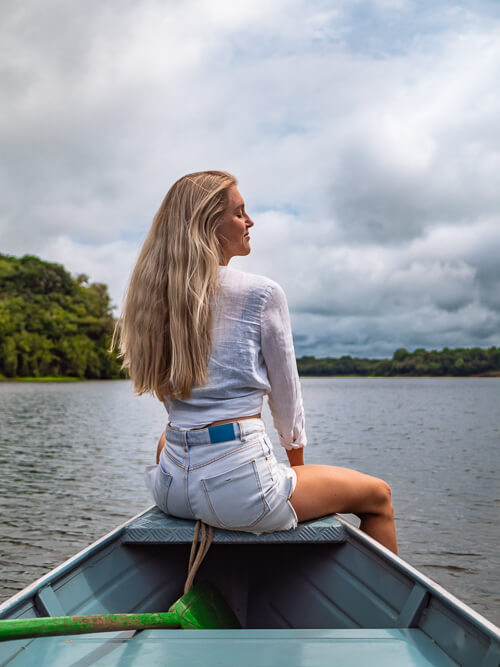
Amazon rainforest lodges in Brazil
There are numerous jungle lodges to choose from around Manaus, ranging from more affordable ones with very basic amenities to more stylish lodges with comfortable bungalows.
Here are my top picks for Amazon rainforest lodges for varying budgets:
BUDGET: Amazônia Exxperience
One of the cheaper Amazon lodges. The rooms are rustic and very simple but apparently, the excursions and the food are wonderful!
MID-RANGE: Dolphin Lodge
This is the lodge where we stayed for two nights and I think it’s one of the best mid-range options you can find. It’s a small rustic family-owned lodge in a tranquil location overlooking a river and surrounded by the rainforest. We stayed in a private bungalow perched on stilts high above the forest floor and took daily tours with our knowledgeable guides to explore the surrounding jungle, lakes and rivers.
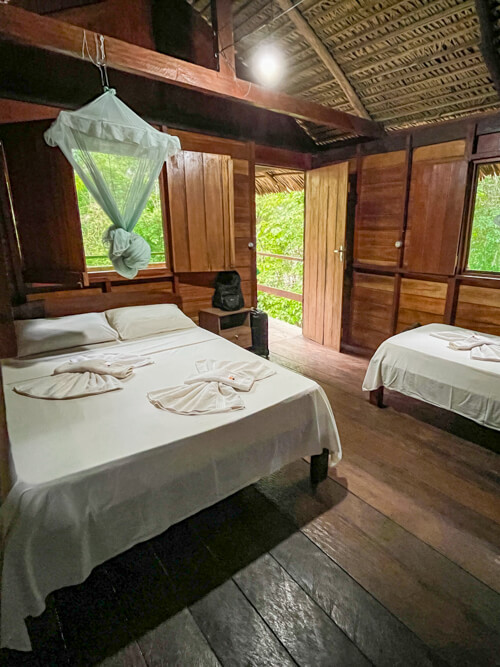
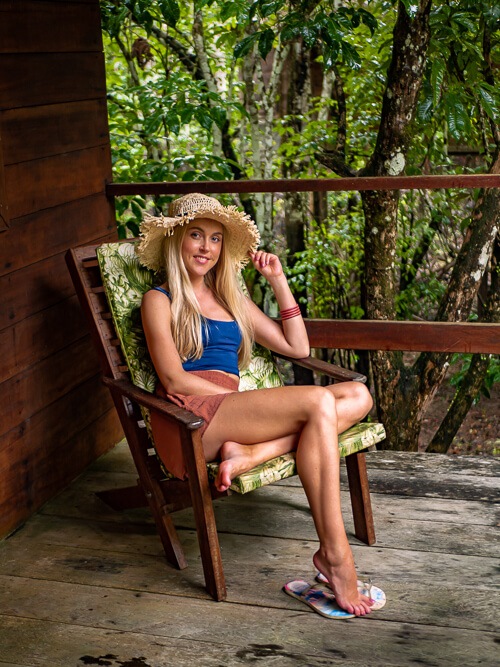
LUXURY: Juma Lodge
If you’re looking for a little more comfort, Juma Lodge is the place for you. It is one of the most famous lodges in the area and has a swimming pool and spacious bungalows with hot water showers.
Which vaccines are needed for a trip to the Amazon?
You are not required to have any vaccinations to visit the Brazilian Amazon. However, vaccinations against hepatitis A, typhoid and yellow fever are recommended.
Some people also choose to take pills against malaria, a disease transmitted by mosquitoes. Alternatively, you could do your best to protect yourself from mosquito bites by wearing long sleeves and trousers when in the jungle, using a mosquito repellent and sleeping under a mosquito net.
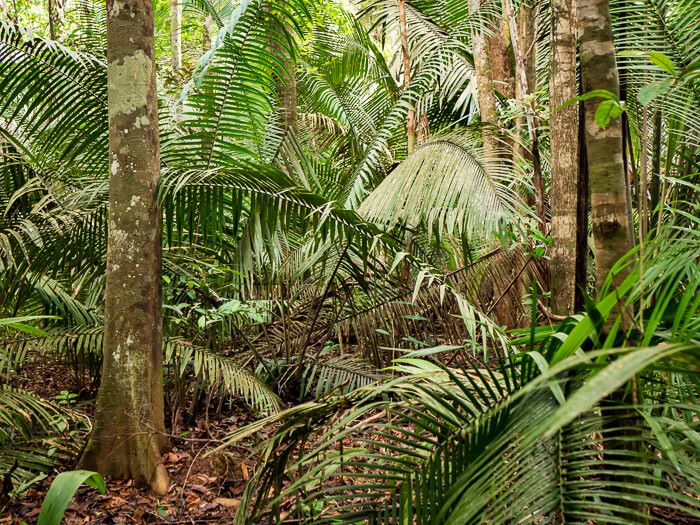
Which animals can you expect to see?
The Amazon jungle is home to countless species of wild animals that inhabit its rivers, treetops and forest floor. It’s one of the most biodiverse places in the world after all!
With that said, many of the animals are extremely well camouflaged or hiding deep in the jungle, far from the curious eyes of tourists. Therefore, you definitely shouldn’t expect to see jaguars, anacondas and tapirs around every corner.
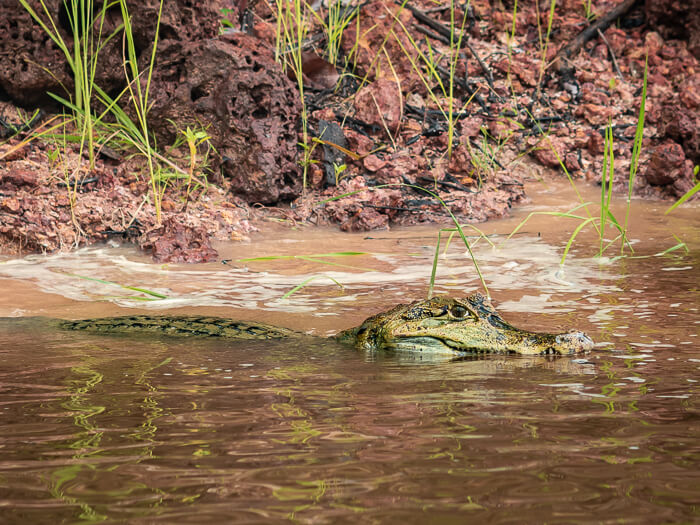
The most commonly seen animals in the Amazon rainforest are monkeys (howler monkeys and squirrel monkeys), caimans, freshwater dolphins (pink and grey ones), sloths, frogs, tarantulas, piranhas, and birds such as herons, macaws and toucans. During our 9 days in the Amazon, we saw all of these animals, though some of them were either very far or revealed themselves only for a brief second.
Seeing this adorable sloth (pictured below) from such a close distance was definitely one of the highlights of my Amazon trip in Brazil:
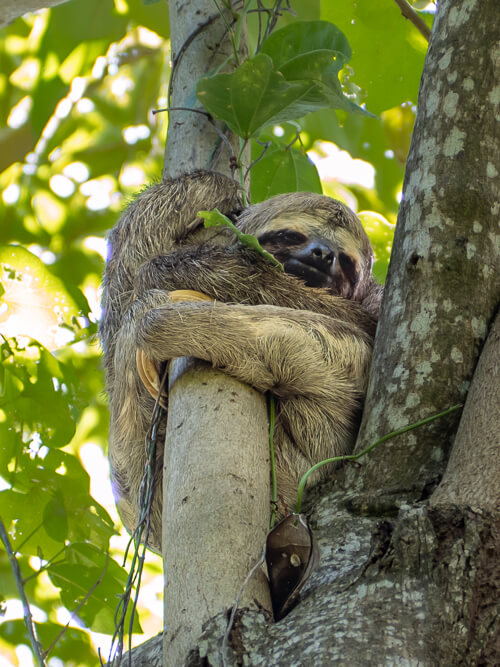
In terms of wildlife spotting, I’d say I’ve had a better experience in Costa Rica, the Galapagos Islands and Bonito (in Brazil) than in the Amazon. But the number of animals you see and how close you see them often comes down to luck! Nevertheless, I think the Amazon is a fantastic place to explore and still offers great chances of seeing wildlife.
Related post: Want to see some amazing marine life in Brazil? Then read my post about Fernando de Noronha, a spectacular volcanic archipelago and a protected nature reserve.
A problem with wildlife tourism in the Amazon
While exploring the Amazon region, it became clear to me that unfortunately unethical wildlife tourism is extremely widespread there. The vast majority of the Amazon rainforest tours on offer include direct interactions with wildlife, which is problematic.
These are activities like petting and swimming with pink river dolphins, hugging sloths and monkeys, taking photos with a baby caiman in your hands, feeding wild animals and so forth. This article by National Graphic explains pretty well why such interactions are harmful to wildlife. Wild animals should stay wild and we shouldn’t treat them as our pets or photo props.
Sustainable and responsible ecotourism in the Amazon still has a long way to go. Therefore, I encourage you to choose your tour operators and lodges wisely.
I was happy to see that the tours we did with Dolphin Lodge didn’t involve any direct contact with wild animals.
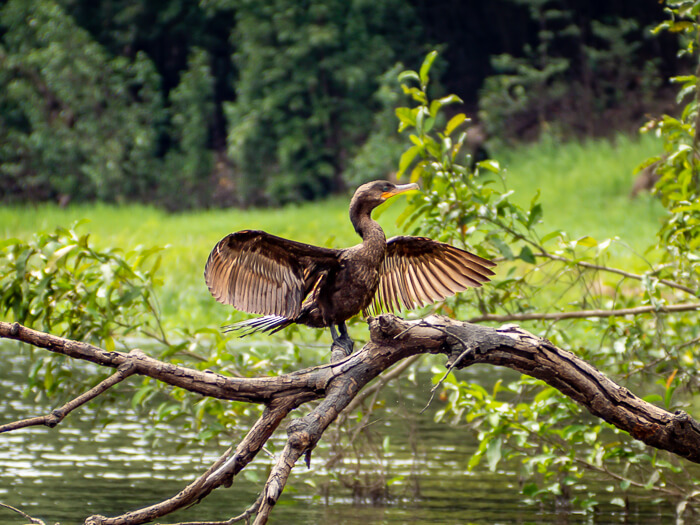
Best things to do in the Amazon rainforest
Thanks to its unique geography and fascinating flora and fauna, there’s no shortage of amazing places to visit and things to do in the Amazon rainforest. Here are some of the best ways to get to know this region and its wonders.
Jungle walk: Go on a trek in the rainforest with expert naturalist guides who will show you and educate you about a variety of exotic plants and wildlife. This was one of my favorite activities in the Amazon.
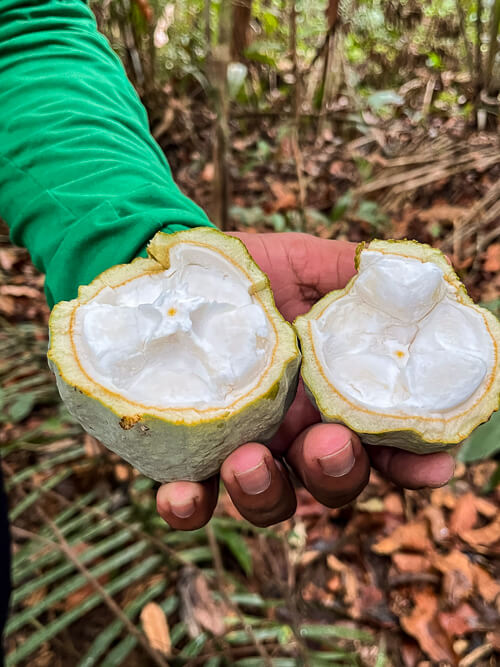
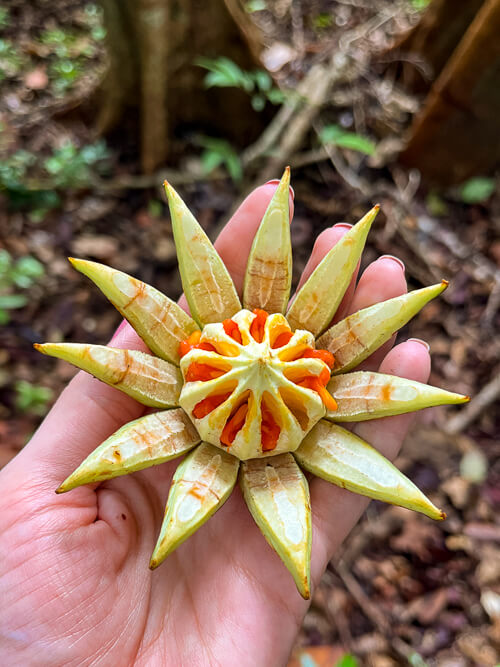
Canoe or boat tour: Take a tour on the calm waters of small rivers and lakes, where you’re likely to spot caimans, river dolphins and numerous birds. There are also piranha fishing tours and nighttime boat tours for spotting nocturnal animals.
Giant Amazon water lilies: Locally known as Vitoria Regia, these aquatic plants are the icon of the Amazon and can be found in ponds and lakes. They’re famous for their enormous leaves, which can reach up to 3 meters in diameter and can apparently hold the weight of a child or a small adult!
The beaches of Alter do Chão: Relax on beautiful sandy beaches along the Tapajós River, in an area nicknamed the Caribbean of the Amazon. Unlike the brown and murky Amazon River, the Tapajós boasts clear blue waters perfect for swimming.
Ferry on the Amazon River: Hop on an authentic ‘no-frills’ ferry used by the locals and sail 740km (460 mi) down the Amazon River to reach Santarem. You won’t see much wildlife on this journey since it’s a transportation ferry but it’s a unique experience nevertheless. Watching the sunset on the Amazon River is something I’ll never forget.
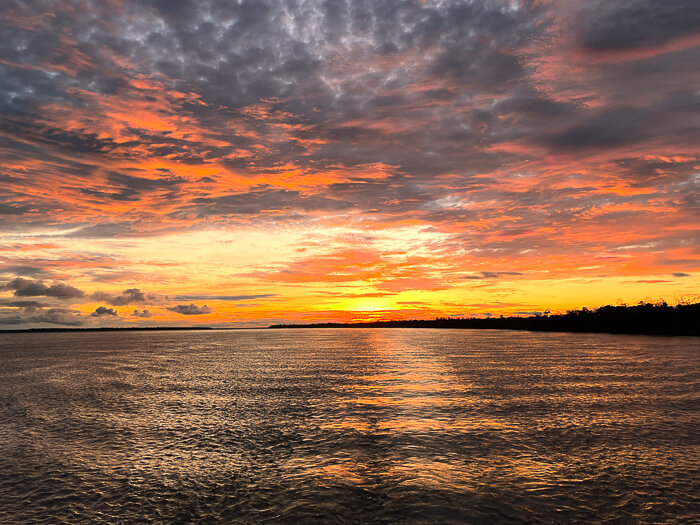
Survival tour: On a survival tour in the jungle, you’ll learn about medicinal plants, fishing techniques, how to build camps, make fire etc. There are one-day tours (such as this one) as well as multi-day tours where you’ll camp in the rainforest.
Waterfalls at Presidente Figueiredo: This area is known for its waterfalls, caves and natural pools surrounded by gorgeous lush jungle. You can visit it on a day tour from Manaus. I would have really loved to explore this area but unfortunately couldn’t fit it into my Amazon itinerary.
Meet a local community: Take a tour to an indigenous community to learn about their way of living, their customs and agricultural practices.
Meeting of the waters: A unique phenomenon where the black waters of Rio Negro and the light brown waters of the Solimões River meet and run side by side for several kilometers before mixing.
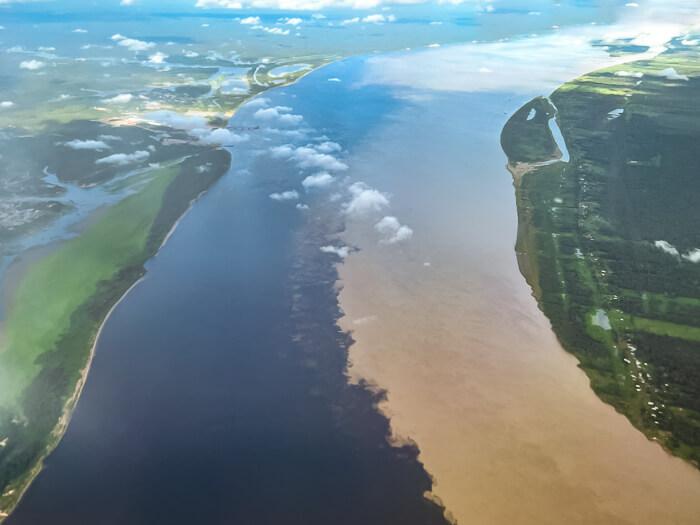
Map with the main points of interest
On the map below, I’ve marked the main points of interest that I mentioned in this Amazon rainforest travel guide as well as the lodges I recommended. Click on the icon in the top left corner of the map for more details.
Is it safe to visit the Brazilian Amazon?
Yes, the Brazilian Amazon is safe to visit. I can say that I felt totally safe throughout our entire Amazon trip. However, there are still some risks and dangers that you should be aware of.
Your biggest threat is mosquitoes that might carry malaria or yellow fever, which are both serious diseases. Always take precautions to protect your skin from mosquito bites.
Another common risk is getting an upset stomach due to the different kinds of bacteria in local food and water, which foreigners’ stomachs are not used to. To reduce your chances of getting sick, avoid drinking tap water during your Amazon trip in Brazil.
Also, it goes without saying that you shouldn’t wander into the depths of the jungle on your own when visiting the Amazon in Brazil. Always go with an official guide. Without one, it’s easy for tourists to get lost or wander into unsafe territories.
In terms of wildlife, there definitely are some dangerous animals in the Amazon but it’s unlikely that they’d attack you unless you provoke them or get too close. To avoid potentially dangerous encounters with animals, do your jungle hikes and river explorations with a guide.
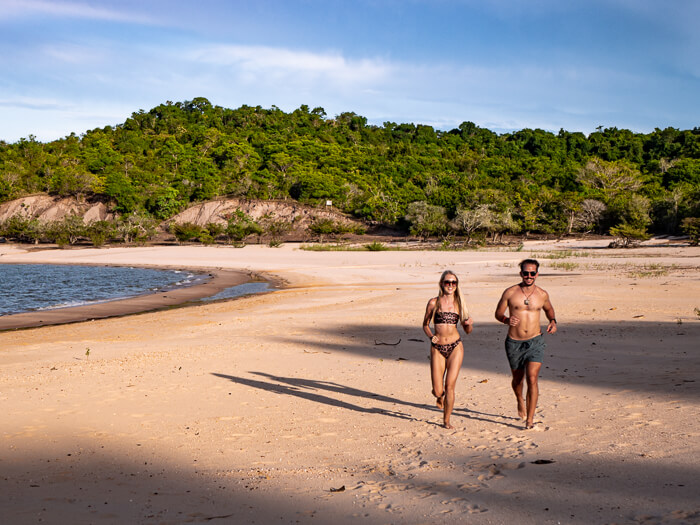
What to wear in the Amazon rainforest?
Since it’s going to be hot and humid, shorts, T-shirts, flip-flops, a swimsuit and a hat to protect yourself from the sun are a must. It’s also going to rain so it’s a good idea to bring a rain jacket.
Trousers and long sleeves are necessary when going on jungle walks in order to protect yourself from mosquitoes and sharp plants. Also, it’s apparently better to dress in light, neutral colors to avoid mosquitoes.
Remember to also bring sneakers or hiking boots. Alternatively, your lodge might provide you with rubber boots if you’re going to walk in particularly muddy areas.
I wore long leggings, a linen shirt and sneakers during our hike in the jungle and I think it was a great choice – I wasn’t feeling too warm and I didn’t get any mosquito bites.
In terms of fabrics, aim for light and breathable ones because it’s almost impossible to dry your clothes in the humid rainforest.
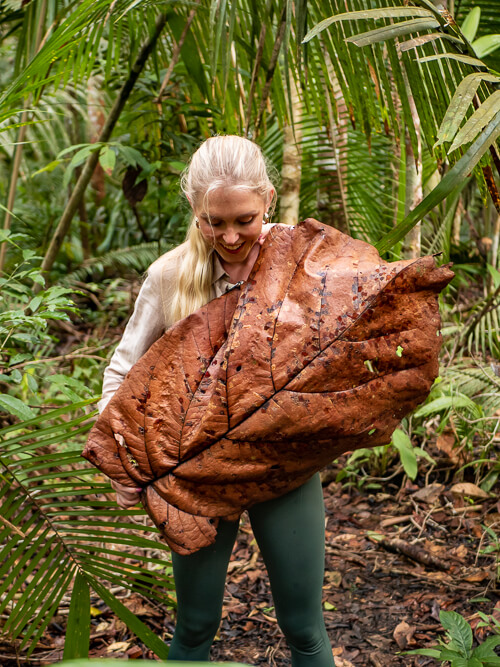
Final thoughts on visiting the Amazon rainforest in Brazil
And there you have it! These were my recommendations on how to visit the Amazon rainforest in Brazil. I hope this travel guide inspired you to explore this fantastic one-of-a-kind region and that you will find it useful for planning your own perfect trip!
If you have any questions about traveling to the Amazon rainforest, drop them in the comments and I’ll do my best to answer them.
For more photos and videos of my Amazon trip in Brazil, check out my Instagram account (look for the highlight called Amazonas).
Be sure to also check out my other Brazil travel guides for more tips on spectacular ecotourism destinations, gorgeous beaches and fun cities to visit:
- 10-day Brazil itinerary – 3 different options
- Visiting Alter do Chão, a hidden gem in the Amazon
- Why you should visit Fernando de Noronha, Brazil’s paradise island
- Visiting Iguazu Falls, one of the 7 Wonders of the World
- Best things to do in São Paulo
- Fun things to do in Rio de Janeiro
- Hiking in Brazil: Chapada Diamantina
Enjoyed reading this Amazon rainforest travel guide? Pin it!
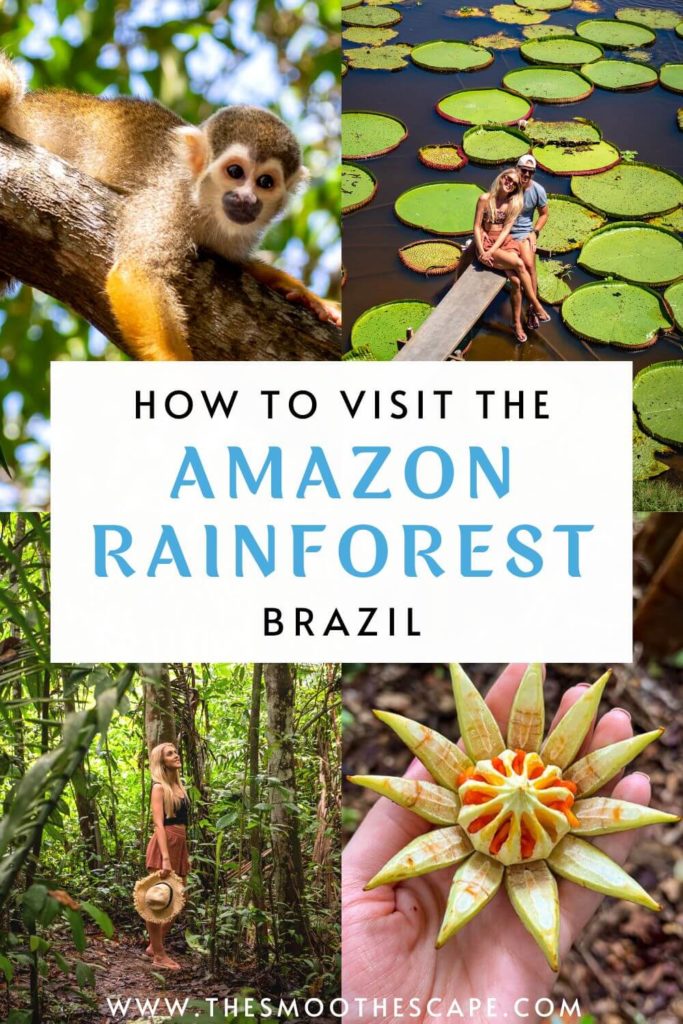
READ MORE:

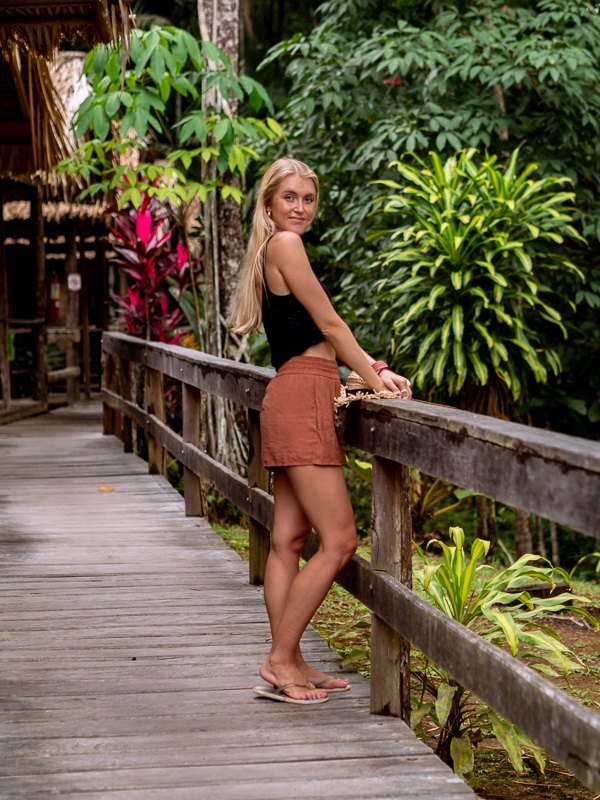
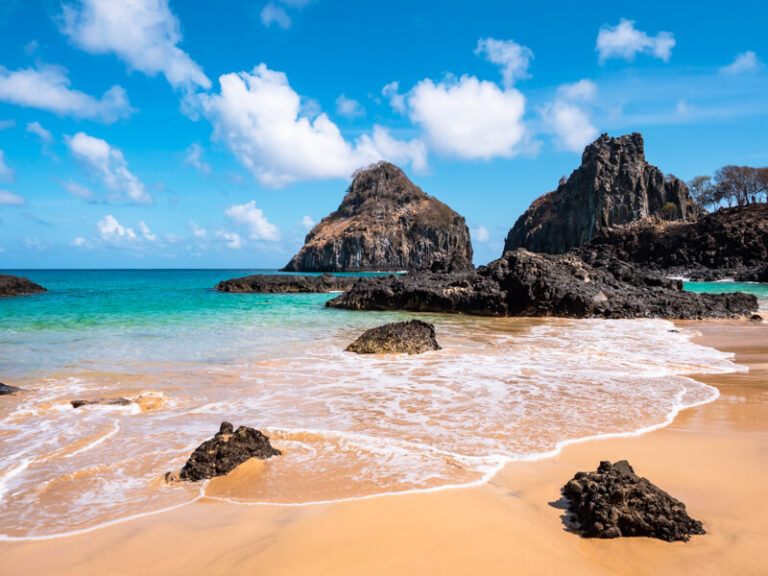
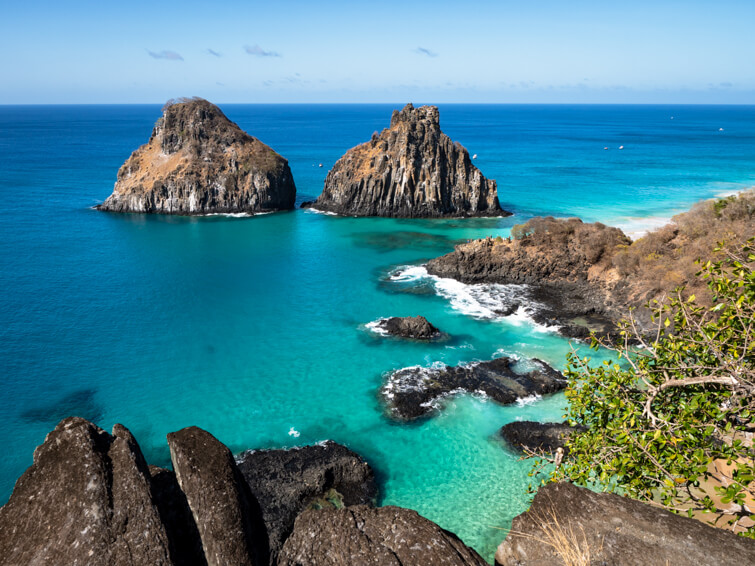
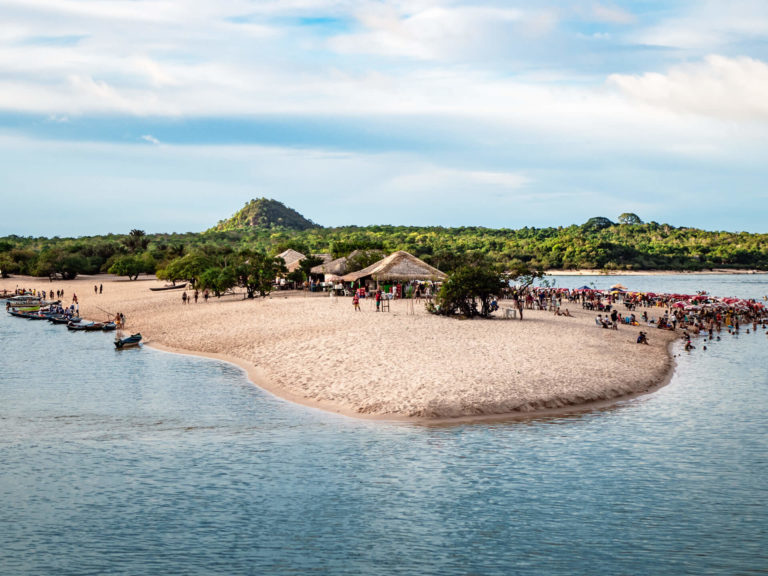
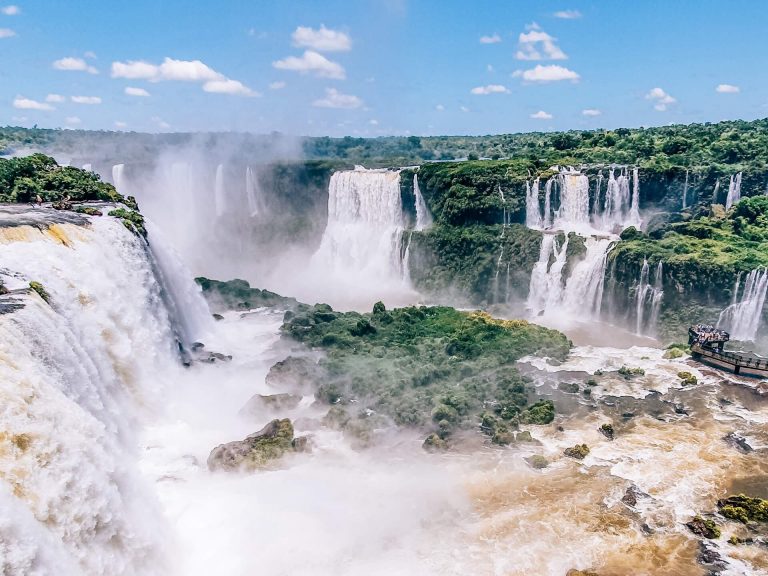
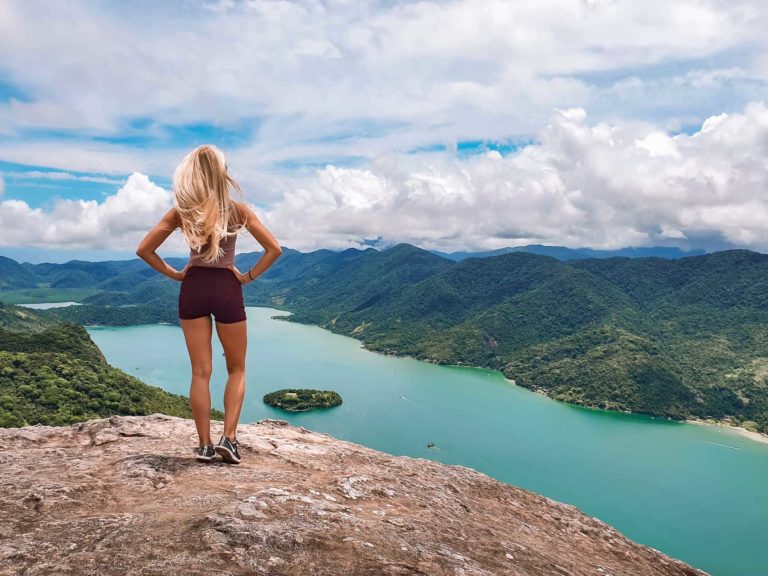
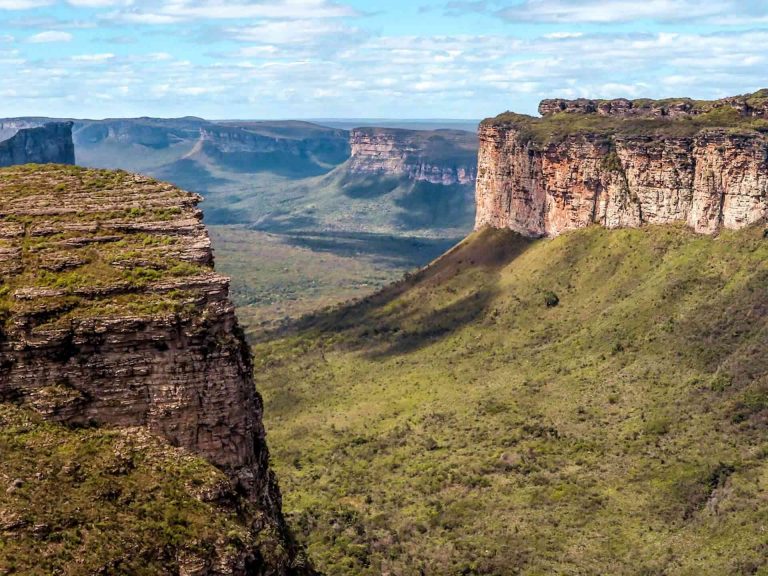
Hey! Can you tell me what the cruise was you booked from Manaus to Santarem? How was it and how was the price?
Thanks!
Michael
Hi! It wasn’t really a cruise what I took. It was a very basic old transportation ferry used by the locals. We just went to Manaus port the day before and bought our ferry tickets there from the ticket booth. The price for a cabin was around 470 BRL but if you’re willing to sleep in a hammock like most people do, it’s much cheaper.
Hi! I would like to visit Manaus and visit the Amazon rainforest. Can I take an uber to the Amazon? If yes, how long it takes? Can I spend just two hours there? Are there bathrooms there? Thanks.
Hi Javier. Manaus is already in the Amazon rainforest. I don’t think taking an Uber to a random place on your own is a good idea. I recommend taking a guided tour instead. This usually involves getting on a boat, sailing along the rivers and hiking in the jungle not driving around in an Uber.
Can you send me an email of your Brazil trip with hotel info etc. what you posted is something we as a family can probably do.
Thanks in advance.
Hi Daniel. The info about where I stayed is in the blog post 🙂
Hi Marjut,
Thanks for the post, very useful info. I’m curious to know, how do you get to these hotels on the river. From Manaus is there just a bunch of boat-taxi services which will take you where you need to go?
Do most people rely on their hotel to buy excursion packages from? From Manaus do people advertise their packages by the (presumably) boat launch? Going to Mexico I remember the moment you get into the city there are hundreds of people advertising their tours. Is it similar? If so would you expect them to pick you up from your hotel?
Thanks in advance.
Hi Dwayne. If you’re staying at a hotel in the jungle or on the river, transfers are usually included in your stay. Excursions are usually also included but in case they’re not, it would makes sense to do them with the hotel you’re staying at. There are lots of tour operators in Manaus but I’d only recommend buying tours from them if you’re staying in the city not in a hotel out in the jungle or on the river. These hotels are usually so remote that it wouldn’t make sense traveling back to Manaus each day and do the excursions from there.
thank you,
we are plannin our vacation trip.
Somebody described ferry cabin conditions as “dreadful”. How’s your experience? Did AC and flush toilet work? Is there any hygiene issue?
I think it depends on what your expectations are. It’s definitely not luxurious but I found it to be tolerable. The toilet and AC worked fine and the bed looked clean. There were some bugs on the bathroom floor though.
Hi Marjut,
Very nice blog. I am from India.
What about the food ? Any veg options are there ?
Thanks.
Thank you! In Manaus, I think you’ll find more vegetarian options but in the lodges in the jungle your options are more limited. You should still be able to find potatoes, rice, vegetables and fruits though.
Hi such a helpful blog. Can you tell me how long is the journey on the ferry. And once In santarem, where did you fly to? I am trying figure if flights routes make sense for places I can see next after the Amazon. Thank you for taking the time to reply.
I’m glad to hear you found it helpful! The journey on the ferry was 36 hours. After visiting the Santarem/Alter do Chao area, I took a flight from Santarem back to Sao Paulo (with a quick layover in Manaus).